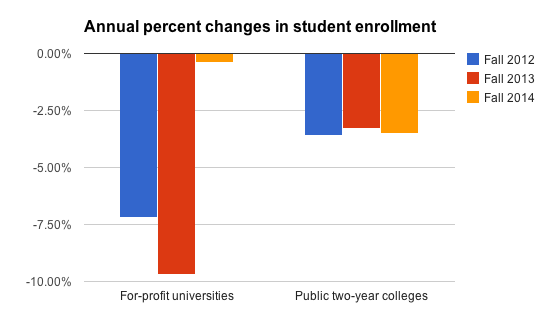Why are so many students choosing for-profit colleges?
For-profit colleges have faced bad press over the last few years–and deservedly so.
They’ve been accused of predatory lending, and graduates report poor outcomes, high student debt, and difficulty finding jobs.
In spite of this, and the fact that they’re more expensive on average than both public two- and four-year colleges, they’re increasing in popularity, particularly among younger students, according to The Hechinger Report.
For-profit colleges increasing in popularity
In general, both for-profit and public two-year colleges appeal to older, low-income students who otherwise may not get a degree.
One would think that community colleges would hold the most appeal, given that their costs are so much lower. The average annual tuition this academic year at a for-profit college is $15,230, compared with $3,347 at a community college and $9,147 at a public four-year college for an in-state student, according to the College Board.
Over the past few years, thanks to a declining high school population and an improving economy, enrollment at community colleges has declined.
For-profit universities followed a similar trend–that is, until 2014, when they halted the decline and drastically improved their enrollment rates.

Despite controversy, for-profit colleges are growing increasingly popular, particularly among younger students. Cheaper, public two-year colleges, meanwhile, face declining enrollment.
According to data from the National Student Clearinghouse data, the number of enrolled students at for-profits dropped only 0.4 percent in the fall of 2014, compared to a year earlier. That’s a dramatic improvement from the previous year’s decline of 9.7 percent.
Why for-profit college enrollment is rising
Why such an increase?
It turns out that for-profit colleges have gotten much better at attracting younger students–most notably through advertising. With larger budgets than public two-year colleges, they can reach out to prospective students in a way that government-funded colleges can’t.
Additionally, experts say for-profit colleges have put more resources into counselors, which attracts younger students looking for more academic and personal guidance. They’re also better at retaining students than community colleges.
The dangers of for-profit colleges
Still, students would be wise to be cautious when considering for-profit colleges. We don’t recommend them to our clients because they’re generally more expensive, leave students with more debt, and aren’t highly regarded by employers.
In addition, some of them are not accredited, meaning their curriculums and programs do not conform to certain standards and that their students are also not eligible to receive federal financial aid.
Thus, many students end up taking out private loans (typically offered directly from the school), which usually have higher interest rates and less flexible repayment plans. It’s one of the reasons that nearly 90 percent of 2012 for-profit graduates had student loans, with the average debt reaching nearly $40,000, according to the Institute for College Access & Success.
Finding affordable colleges
Choosing a college can be overwhelming. An expensive college, such as a for-profit college, might seem appealing when a student is in high school, but when they’re facing thousands of dollars in debt after graduation and can’t find a job, the novelty wears off.
We help students and families find affordable colleges they’ll be happy with long after graduation–quality schools that give them a good education without leaving them drowning in student debt.
If you need help finding affordable colleges or figuring out how to pay for college, we can help. Contact us using this form or call us at 1-888-234-3907.
affording college, choosing a college, college value, community college, for-profit colleges
